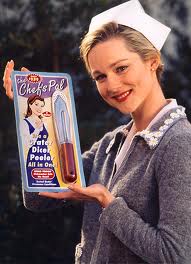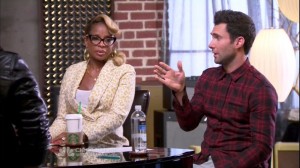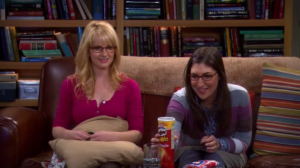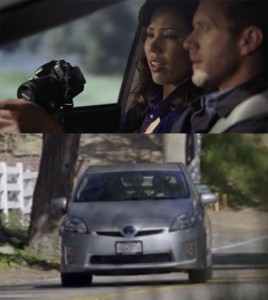Branded entertainment. Situational advertising. Product placement. –
They are integrated marketing attempts to embed advertising within content. Just over a decade ago the media was reporting on its rise and unlimited options (“The times they are a-changin’,” 2004), and now it is an unavoidable reality.
 These days, one cannot turn on a network television show without experiencing branded content. And surprisingly, the strongest product placements are more difficult to recognize. For example, something as simple as a smart phone. Nearly everyone has a cell phone in real life, so it does not seem so odd for our favorite characters on television to use their iPhone or Galaxy in a scene, or use a laptop without the logo covered.
These days, one cannot turn on a network television show without experiencing branded content. And surprisingly, the strongest product placements are more difficult to recognize. For example, something as simple as a smart phone. Nearly everyone has a cell phone in real life, so it does not seem so odd for our favorite characters on television to use their iPhone or Galaxy in a scene, or use a laptop without the logo covered.
Some products are integrated in multiple ways for repetition and intended effectiveness. In a program like in the new season of NBC’s “The Voice,” the lobby waiting area for competitors contains a Starbucks branded coffee shop. Plus the coaches, subliminally,  have cups resting in the cup holders of their chairs that are clearly visible as the Starbucks cold drink cups with the signature green straw. This image shows a coaching session from season three where drinks are casually resting on the piano in front of the two celebrity coaches, one drink just happens to be the major advertiser Starbucks. This may or may not be any less in-your-face than the Coca-Cola placement in Fox’s American Idol, but it does seem to be effective – I remember it.
have cups resting in the cup holders of their chairs that are clearly visible as the Starbucks cold drink cups with the signature green straw. This image shows a coaching session from season three where drinks are casually resting on the piano in front of the two celebrity coaches, one drink just happens to be the major advertiser Starbucks. This may or may not be any less in-your-face than the Coca-Cola placement in Fox’s American Idol, but it does seem to be effective – I remember it.
Branded entertainment has definitely come a long way from the days worth mocking with movies like The Truman Show. For example, in CBS’s The Big Bang Theory (one of the top rated shows on network television), branded content is such an integral part of the story lines it is often difficult to notice it like with the comic book heroes and the character Penny’s job at The Cheesecake Factory a national restaurant franchise. 
In one episode of The Big Bang Theory, a mini-storyline centers around the character Sheldon’s strange quirk of knowing all the ingredients to Pringles, now owned by Kellogg’s, (Click here to watch the scene, jump to 00:15).
 Weaving content into television shows is a reality. There is certainly room for improvement as evidenced by the nearly weekly, embarrassing plugs for Toyota automobiles in episodes of Fox’s Bones. One can never forget the episode where they tried to explain what a great car the minivan was for the single, young artist on the show because of all the storage room, nor the episodes where they take 15-30 seconds to discuss the handy new feature on their car that comes standard like ‘lane detection’ or self parking.
Weaving content into television shows is a reality. There is certainly room for improvement as evidenced by the nearly weekly, embarrassing plugs for Toyota automobiles in episodes of Fox’s Bones. One can never forget the episode where they tried to explain what a great car the minivan was for the single, young artist on the show because of all the storage room, nor the episodes where they take 15-30 seconds to discuss the handy new feature on their car that comes standard like ‘lane detection’ or self parking.
Branded content and product placement is becoming increasingly popular in the world of DVR, Hulu and Netflix, the key to integrated marketing success will likely be in consistency and blending content across media (MediaPost & MediaPost). I must begrudgingly admit that this branded entertainment and product placement does work – I recalled each of these television shows and the featured brands from memory…
Can you think of any examples when branded content was not glaringly obvious, and what you would consider a successful product integration?

12 Responses to Now I Want Pringles